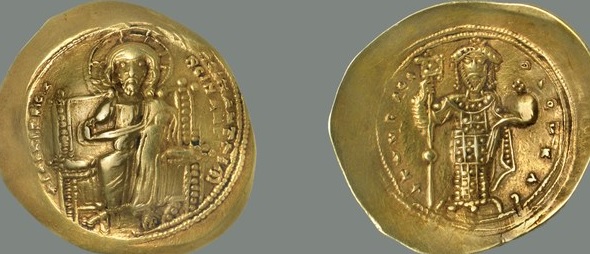Constantine X Doukas spends his reign doing little to help the eastern front. We explore the possible reasons for this inactivity. We also cover Doukas’ death and the oath he made his wife swear.
Period: 1059-67
Download: Feeling Blank
RSS Feed: The History of Byzantium
If you want to send in feedback to the podcast:
– Either comment on this post.
– Or on the facebook page.
– Leave a review on Itunes.
– Follow me on Twitter


Hi Robin! I was noticing that the Byzantine imperial succession has seemed to become incredibly unstable following the death of Basil II, did the Byzantines themselves see this as a problem? Or rather was there more of an attitude that warding off coups and assasinations was part of the role and if an Emperor was murdered and replaced he wasnt worth crying about and at least the usurper would hand out gifts and tax breaks to keep the same from happening to him?
Hi. Those writing contemporary histories certainly bemoan the absence of good leadership during this period. But they rarely question the system itself. I think part of the problem during this period was that wealth was washing about the system in a way that made it hard for the Emperors to be believed when they said that money was running out. The Empire had expanded and was going through an economic uptick. But the cost of administering the expanded borders had gone up too and this wasn’t understood well at the capital. So yes I think most of the time people shrugged at the fall of an Emperor and were keen to get a hand out from the new man. Only those in a position to understand events in distant lands made a connection between political instability and trouble on the borders.
I confess I’m still confused as to exactly who the Oghuz were. Going by the maps, the main population of Pechenegs were still living north of the Danube, and the only other steppe tribe in the vicinity found on maps are the Cumans. Were they a breakaway tribe from either the Pechenegs or the Cumans or just an unusual name for raiders coming from within one of those confederations that the sources use for this raid for some reason? If they were a separate people, what was their point of origin and was the nature of their interaction with those two confederations?
Hey, good question. Sadly it’s impossible for modern maps to accurately represent the world of the Steppes. Most “Pechenegs” probably would not have identified as such. Nor would they necessarily have seen themselves as one people. Nor were they settled in one area! They were constantly migrating around. So although the map reduces the next grouping to “Cumans” – that’s more an acknowledgement of the next organised confederation to encounter Byzantium. Turkic-speaking tribes dominated the whole area and we can only identify different groups thanks to reports from settled peoples. The Byzantines knew these raiders as Oghuz and so we connect them to other Guzz Turks who crop up in other sources from this period.